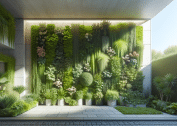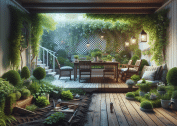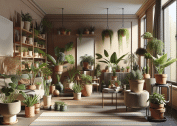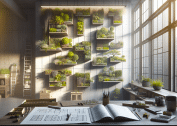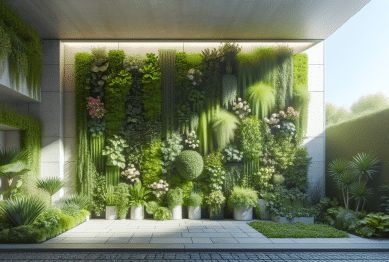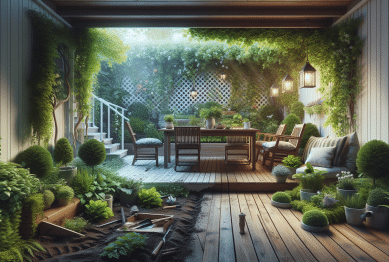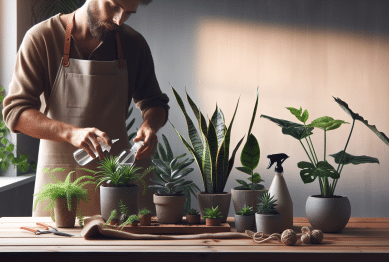Minimalist home design mental health is more than just a trend—it’s a wellness revolution for 2025.
By embracing simplicity, you can reduce stress, sharpen focus, and cultivate calm in your living environment.
In a rapidly connected, cluttered world, minimalist home design mental health is gaining traction. As more people intentionally declutter and streamline their surroundings, they report greater emotional balance, clarity, and peace of mind.
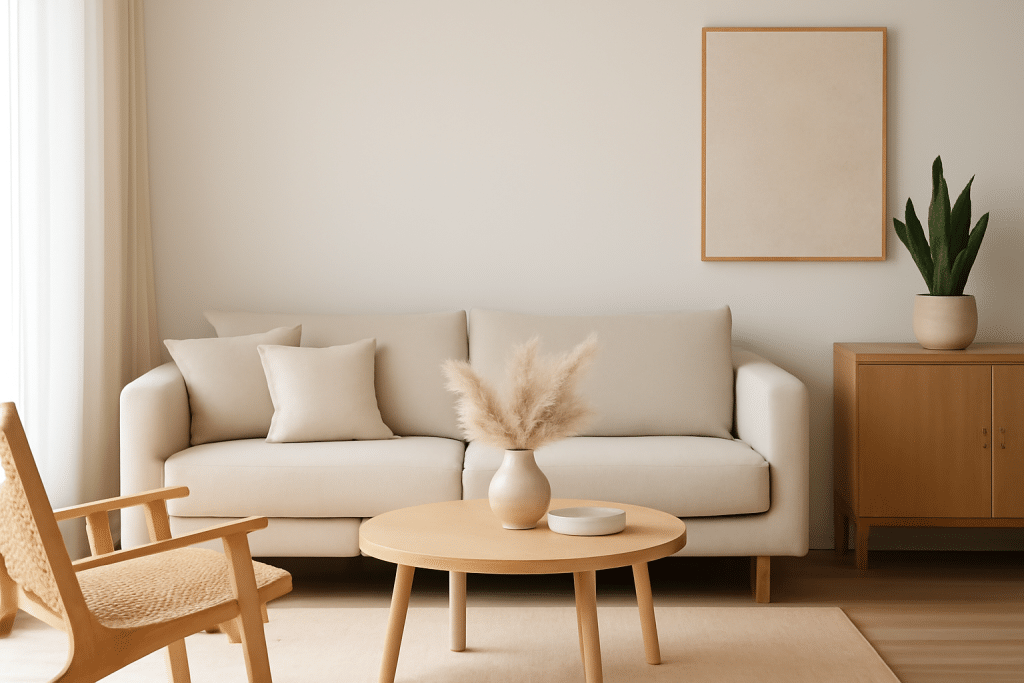
The Science Behind Minimalism & Mental Health
Reduced Stress and Cortisol
Studies consistently show that cluttered spaces elevate anxiety and cortisol levels. A minimalist environment with clean lines and fewer items helps lower stress and creates a calming backdrop for mental rest.
In fact, neuroscientific research suggests that when your brain is surrounded by disorganized items, it struggles to filter out irrelevant stimuli, increasing cognitive overload (Becoming Minimalist 2025).
Enhanced Focus and Emotional Clarity
Visual clutter consumes mental energy and leads to decision fatigue. Minimalist homes, on the other hand, reduce distractions and foster concentration. As such, minimalism isn’t just about physical space—it also nurtures a mental environment conducive to clarity and calm.
Psychologists have likened minimalist environments to “mental blank slates,” allowing individuals to reset emotionally and mentally after chaotic days.
Intentional Living and Gratitude
Minimalism promotes mindfulness and intentional choices. When you own fewer items, each possession holds meaning and purpose. This environment fosters a sense of gratitude, as individuals tend to cherish and use what they own more frequently.
Minimalist living has also been linked to increased happiness due to its alignment with intrinsic values such as sustainability, simplicity, and purpose (DecorMatters 2024).
2025 Trending Styles: Minimalism + Wellness
Wellness-Centered Minimalism
This style integrates mental health concepts into interior design. Expect to see furniture that promotes posture and lighting that follows circadian rhythms. These functional elements prioritize psychological comfort alongside aesthetics.
Biophilic Minimalism
This popular design blends simplicity with nature. It includes houseplants, natural light, wood, and stone textures. These elements help soothe the nervous system and mimic outdoor calm, boosting serotonin and reducing the need for external stimulation.
Studies confirm that interaction with natural elements indoors significantly reduces symptoms of anxiety and depression, particularly in urban settings.
Warm Minimalism and Japandi
Combining clean lines with cozy textures, Japandi style (a fusion of Japanese and Scandinavian design) offers the emotional warmth often missing in older minimalist approaches. Expect soft edges, handcrafted items, and a neutral palette rooted in earthy tones.
Benefits of Minimalist Design for Mental Well‑being
1. Clearer Physical and Mental Space
- Fewer objects reduce visual distraction
- Open layouts promote mental openness
- Decluttering supports mindfulness and relaxation
2. Improved Sleep and Lower Anxiety
Minimalist bedrooms support sleep hygiene. By removing stimulating items and using neutral tones, you create a sanctuary ideal for winding down.
A 2023 Sleep Foundation report found that clutter-free bedrooms help regulate melatonin production, improving sleep efficiency.
3. Better Relationships & Social Energy
By removing distractions and simplifying home routines, inhabitants often have more time and mental capacity for meaningful connection (Becoming Minimalist 2025; Climatech Pro Air 2025; Optimist Daily 2024).
4. Elevated Sense of Agency and Calm
When individuals curate their spaces consciously, they feel empowered. A minimalist home fosters calm decision‑making and psychological control over one’s environment (Arxiv 2025; Vocal Media 2025).
Practical Guide: How to Bring Minimalist Design Home
1: Declutter with Purpose
- Start small: closets, entryway, desk
- Ask: “Does this serve my daily needs or well‑being?”
- Apply “one in, one out” to prevent accumulation
2: Focus on Functional Furniture
- Choose multipurpose pieces
- Opt for clean lines, neutral tones, natural materials
- Hidden storage helps maintain airy surfaces
3: Layer in Biophilia
- Add low‑maintenance houseplants (e.g. snake plant, pothos)
- Let natural light flow—consider sheer curtains or strategic mirrors
- Bring in natural textures like wood, stone, rattan, woven textiles
4: Curate Color & Texture
- Use a neutral palette—off‑white, beige, soft gray—to calm the senses
- Soften with tactile throws, rugs, cushions in warm tones
- Japandi’s organic curves offer warmth without clutter (Climatech Pro Air 2025; Homes & Gardens 2025; Wikipedia 2025)
5: Introduce Minimal Natural Water or “Blue Mind” Elements
Even small water features or touches of aqua/teal in décor can evoke the calming effects of water and support mental clarity (Veranda 2025).
Minimalist Trends to Watch in 2025
- Minimalist maximalism: combining simplicity with select standout pieces or texture, balancing grace with personality (Homes Society 2024).
- Warm minimalism: rounded forms and softer lines that evoke comfort within clean spaces (Homes & Gardens 2025; The Spruce 2025).
- Wellness‑driven design: circadian lighting, aromatherapy corners, meditation nooks integrated with minimal décor (Architectural Digest 2025).
The Psychological Impact of Intentional Interiors
Studies point to both direct and indirect pathways by which minimalist, biophilic interiors support mental health:
- Nature exposure indoors improves mood, reduces stress, and restores attention (Wikipedia 2025).
- Depression interventions involving natural materials and home crafting show improved mood and personal agency among participants (Arxiv 2025).
Before & After: What a Minimalist Makeover Can Do
| Area | Before | After | Benefit |
|---|---|---|---|
| Living Room | Crowded surfaces, bulky décor | Open layout, simple furniture | Reduced anxiety, visual rest |
| Bedroom | Overstuffed closet, bright colors | Soft neutrals, storage organized | Better sleep and mental calm |
| Entry / Hallway | Shoe/mail clutter | Clean lines, functional hooks | Sense of control and welcome |
| Office / Workspace | Excess supplies, distractions | Minimal desk, natural light, plant | Better focus and creativity |
Conclusion
Minimalist home design mental health trends in 2025 are not merely aesthetic—they offer science-backed ways to reduce stress, enhance focus, and elevate emotional well-being. Whether you lean toward warm minimalist or Japandi styles with organic warmth, the key is intentionality, purposeful space, and subtle biophilic connection. Starting small—by clearing clutter or inviting a plant—can ripple into greater calm and clarity.
By designing your home around mental wellness, minimalist choices can transform more than space: they can renew the mind.
References
- Becoming Minimalist (2025) How Minimalism Can Improve Your Mental Health. Available at: https://www.becomingminimalist.com (Accessed: 4 August 2025).
- DecorMatters (2024) Declutter the Mind: The Mental Health Benefits of Minimalism. Available at: https://decormatters.com (Accessed: 4 August 2025).
- Design Services Ltd (2025) 2025 Trends in Minimalism: What’s Shaping the Future of Simplified Living. Available at: https://www.designservicesltd.com (Accessed: 4 August 2025).


